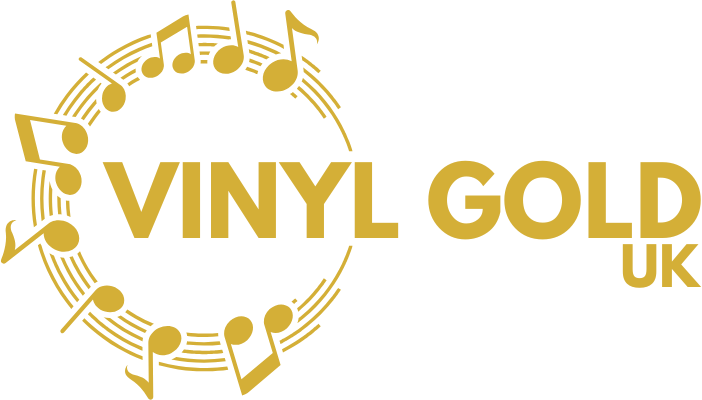Unpacking Rage Against the Machine: Albums, Lyrics, and Impact
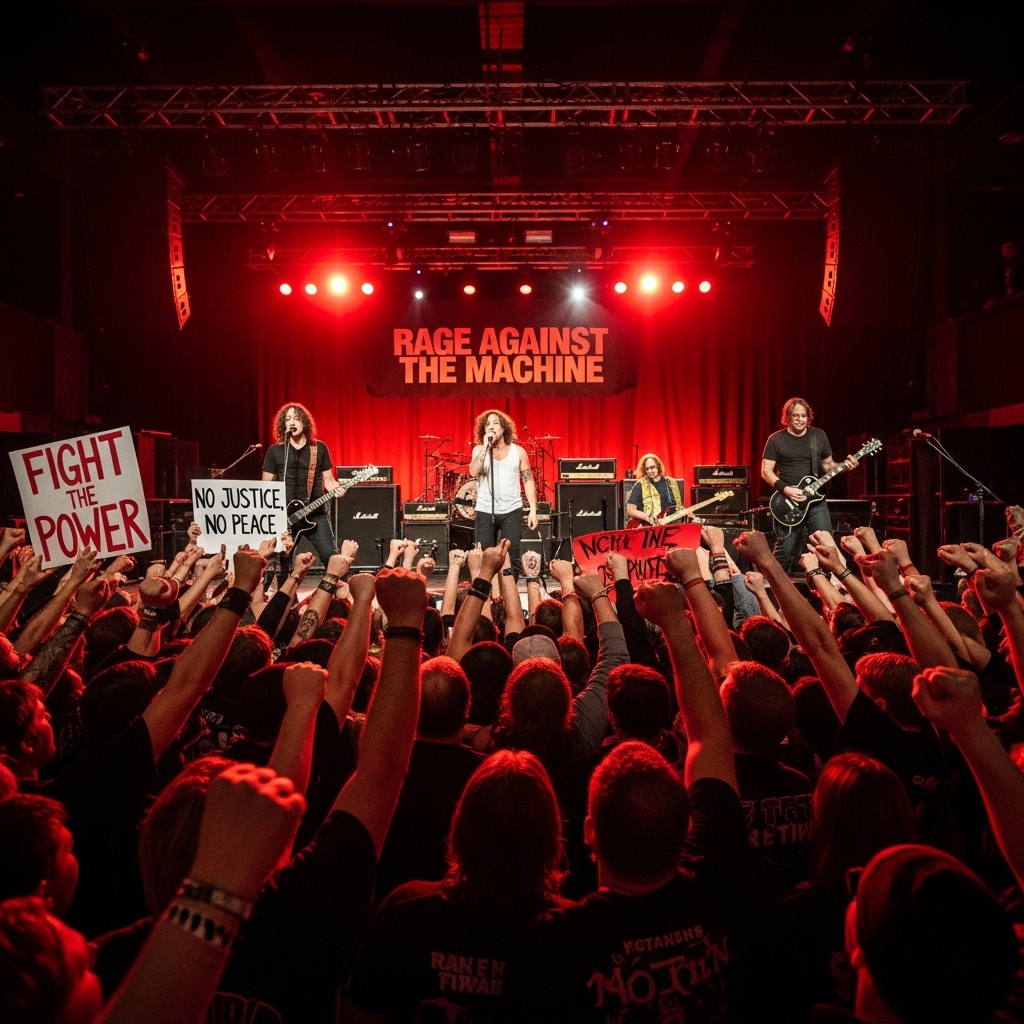
Unpacking Rage Against the Machine: Albums, Lyrics, and Impact
Rage Against the Machine didn’t just make music—they launched a cultural movement. Blending rap, metal, funk, and punk, the band confronted politics head-on and sparked intense conversations around power, justice, and resistance. With only a handful of albums, Rage Against the Machine reshaped the sound of protest music. Their lyrics demand attention, and their performances remain unforgettable. Whether you’re revisiting their discography or discovering them for the first time, exploring their albums offers insight into a group that never backed down from challenging authority. This guide breaks down their biggest records, influence, and impact—while answering the most searched questions about one of the most uncompromising bands in rock history.
What is Rage Against the Machine’s political stance?
Rage Against the Machine openly advocates for anti-capitalism, anti-authoritarianism, and social justice. Their lyrics oppose war, police brutality, and systemic inequality. Each album reflects their commitment to resisting institutional power. Whether criticizing U.S. foreign policy or domestic injustice, their message remains clear: challenge oppressive systems wherever they exist.
What are Rage Against the Machine’s most famous songs?
Several songs stand out in Rage Against the Machine’s catalogue. “Killing in the Name” became a global protest anthem. “Bulls on Parade” and “Guerrilla Radio” captured public frustration with power and greed. Tracks like “Bombtrack,” “Sleep Now in the Fire,” and “Freedom” continue to energize rallies and playlists alike.
Why did Rage Against the Machine break up?
In 2000, vocalist Zack de la Rocha left Rage Against the Machine due to creative differences and frustration over the band’s direction. He felt their message wasn’t driving real-world change. The band later reunited several times, but internal disagreements and external challenges have kept them from long-term continuity.
Is Rage Against the Machine still together?
The band has reunited and disbanded more than once. As of late 2023, drummer Brad Wilk confirmed they would not tour or perform live again. While the members remain active individually, Rage Against the Machine appears inactive as a unit. Always verify the latest status before planning around reunions.
Who influenced Rage Against the Machine?
Rage Against the Machine draws from diverse influences. They cite Public Enemy and Run D.M.C. for lyrical urgency and hip-hop attitude. Musically, they borrow energy from Led Zeppelin, The Clash, and countless punk and metal acts. Funk grooves and old-school rap beats helped shape their aggressive, genre-bending sound.
What genre is Rage Against the Machine?
Rage Against the Machine exists at the crossroads of several genres. They are often categorized as rap metal, rap rock, alternative metal, and funk metal. Their fusion of Zack de la Rocha’s vocal delivery with Tom Morello’s guitar techniques created a genre-defining sound that defied traditional rock expectations.
What does “Killing in the Name” mean?
“Killing in the Name” protests systemic racism and police brutality. The lyrics respond directly to state-sanctioned violence and racial injustice. Its famous refrain underscores the refusal to conform. Rage Against the Machine wrote it after the beating of Rodney King in 1991, making it instantly relevant and widely quoted.
What is Tom Morello’s guitar technique?
Tom Morello transformed guitar playing with his unconventional approach. He uses toggle switches, kill switches, whammy bars, and effects pedals to mimic turntables and synths. Rather than focus on solos, he creates textures and rhythms that drive the band’s intensity. His techniques continue to influence guitarists across genres.
Are Rage Against the Machine members activists?
Yes, every member of Rage Against the Machine engages in activism. Tom Morello has campaigned for workers’ rights and economic justice. Zack de la Rocha has supported Indigenous, immigrant, and anti-police brutality movements. Their music and real-world involvement go hand-in-hand, often aligning with global protests and causes.
What is the meaning of the band’s name?
“Rage Against the Machine” represents resistance to institutional control. “The Machine” symbolizes systems of oppression—government, corporations, media, and law enforcement. Their name captures their mission: to disrupt power, provoke thought, and call for radical change through sound, lyrics, and action.
How would you rank Rage Against the Machine albums?
Fans debate this regularly. Some place their 1992 debut at the top for its explosive impact. Others prefer The Battle of Los Angeles for its precision and polish. Evil Empire and Renegades also spark discussion. Ranking them often depends on whether you value raw protest, musical experimentation, or lyrical sharpness.
The Albums
1. Rage Against the Machine (1992)
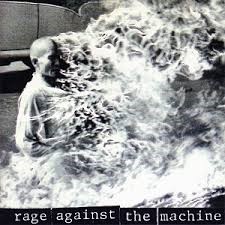
Released in November 1992, Rage Against the Machine introduced a sound that shook the foundations of modern rock. The album fused rap, funk, and metal with lyrics centered on political defiance. Rage Against the Machine didn’t just debut—they detonated. From the first track, their identity felt fully formed, blending groove-heavy riffs with Zack de la Rocha’s furious delivery.
Critics recognized the album’s bold stance. Many praised its raw intensity and powerful themes. Rolling Stone called it a “molotov cocktail of rebellion.” Fans responded immediately. The album went triple platinum in the U.S. and earned international acclaim. Rage Against the Machine had arrived with something more than music—a movement.
Tracks like “Killing in the Name” and “Bombtrack” became anthems. Notably, “Killing in the Name” evolved into a global protest song. While few debut records reach this level of impact, Rage Against the Machine achieved it by speaking directly to injustice and inequality.
Tom Morello’s innovative guitar work added another dimension. He manipulated pedals and toggle switches to mimic turntable effects, redefining what guitarists could do. This sonic experimentation gave the band a unique edge.
Although the album contained no traditional hooks, its riffs and messages stuck. Rage Against the Machine didn’t aim for radio success—they targeted systemic power structures. That choice built a fiercely loyal fan base.
The album’s themes include anti-authoritarianism, institutional racism, and corporate exploitation. Each track contributes to a larger message of resistance. Rage Against the Machine made clear that music could fuel social change without compromise.
Even decades later, the debut remains essential listening. It shaped the genre of rap metal and influenced artists across political spectrums. Rage Against the Machine began their legacy here—with an album that still challenges, inspires, and provokes.
2. Evil Empire (1996)
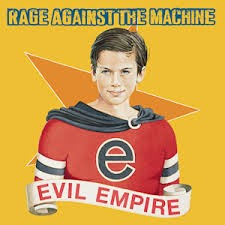
Released in April 1996, Evil Empire marked the return of Rage Against the Machine after their explosive debut. The album debuted at No. 1 on the Billboard 200, proving the band’s growing influence. Rage Against the Machine used this record to sharpen their political commentary while expanding their musical depth.
Although the band retained their core sound—rap vocals, heavy guitar riffs, and pounding rhythms—they added nuance. Tom Morello’s guitar work grew even more inventive. His use of effects and unconventional techniques gave each track its own identity. Zack de la Rocha’s lyrics remained fierce, attacking systemic oppression, corporate control, and American imperialism.
Songs like “Bulls on Parade” and “People of the Sun” became instant classics. “Bulls on Parade” especially resonated for its direct attack on military-industrial power. Rage Against the Machine didn’t dilute their message; instead, they amplified it through sharper production and tighter song structures.
Critically, Evil Empire earned praise for its urgency and authenticity. It won the Grammy for Best Metal Performance in 1997. Many reviewers highlighted how the band had matured without compromising their ideals. The record showed that Rage Against the Machine could maintain their edge while reaching a broader audience.
Themes across the album explore American foreign policy, media manipulation, and historical erasure. Rage Against the Machine encourages listeners to question dominant narratives. That message found strong support among young people and activists, reinforcing the band’s reputation as a voice for dissent.
Commercially, the album went triple platinum in the U.S., further cementing Rage Against the Machine as a major force. With Evil Empire, the band proved their debut wasn’t a one-time breakthrough. They deepened their sound and message, creating an album that continues to inspire protest and provoke thought.
3. The Battle of Los Angeles (1999)

Released in November 1999, The Battle of Los Angeles marked Rage Against the Machine’s third studio album. It arrived at the peak of their popularity and debuted at No. 1 on the Billboard 200. Rage Against the Machine brought their most refined mix of aggression, rhythm, and political commentary yet.
Musically, the band pushed their boundaries. Tom Morello’s guitar work reached new levels of creativity, blending noise, feedback, and melody with surgical precision. Zack de la Rocha’s vocal delivery remained urgent and direct. The rhythm section, tight and relentless, gave each track drive and depth.
Rage Against the Machine used this album to challenge corporate control, social inequality, and systemic failure. Songs like “Guerrilla Radio” and “Sleep Now in the Fire” became rallying cries. Both received major airplay while retaining sharp political messages. Rage Against the Machine didn’t soften their stance to broaden their audience—they made their message even louder.
Critics widely praised the album for its focus and energy. It made many year-end “best of” lists and won the Grammy for Best Hard Rock Performance in 2001. Fans embraced it for its lyrical precision and sonic power. The album’s impact extended beyond music into movements and demonstrations around the world.
Thematically, The Battle of Los Angeles deals with media control, capitalism, and urban struggle. Rage Against the Machine emphasized activism through sound. They used the album to ask questions few others dared to voice in the mainstream.
Commercially, the record sold over two million copies in the U.S. It reaffirmed Rage Against the Machine’s position as more than a band—they were a cultural force. This album solidified their legacy, showing they could evolve while remaining completely committed to their message.
4. Renegades (2000)

Released in December 2000, Renegades became the final studio release by Rage Against the Machine before their initial breakup. Unlike their previous albums, Renegades featured no original songs. Instead, Rage Against the Machine covered influential tracks from artists who shaped their worldview. This approach gave listeners a deeper look into the band’s roots.
Rage Against the Machine took songs from hip-hop, punk, and classic rock and reimagined them with their signature style. The band brought new energy to every track without losing the message of the original. Tom Morello’s guitar remained central, using effects and distortion to transform the source material. Zack de la Rocha’s voice channeled anger and urgency, giving each cover a new edge.
The band’s choices reflected their political alignment. They covered artists like Afrika Bambaataa, Bob Dylan, and Minor Threat—each known for challenging the status quo. Rage Against the Machine honored these legacies while making the songs their own. That blend of tribute and rebellion helped Renegades stand apart from typical cover albums.
Critics gave mixed but generally favorable reviews. Many praised the band’s bold interpretations and cohesive execution. Some questioned the need for a covers record, yet fans appreciated the raw power and consistent messaging. The album reminded listeners of what Rage Against the Machine stood for—even without original material.
Themes on Renegades still centered on resistance, injustice, and identity. Rage Against the Machine used these covers to reinforce their role as musical activists. Despite being a non-traditional entry in their discography, Renegades maintained their confrontational spirit.
Commercially, the album achieved platinum status in the U.S. For a covers release, that success spoke volumes. Renegades closed an era, reflecting both Rage Against the Machine’s influences and their continued commitment to challenging the system.
5. Live at the Grand Olympic Auditorium (2003)
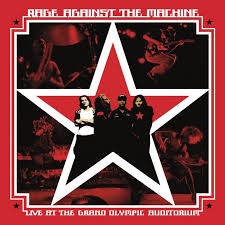
Live at the Grand Olympic Auditorium captured Rage Against the Machine’s intense live performance energy. Released in November 2003, this album featured recordings from two 2000 shows in Los Angeles. Rage Against the Machine delivered a powerful set, showcasing the raw force of their music and message.
The live album presented many fan favorites, highlighting the band’s skill and passion on stage. Rage Against the Machine’s combination of rap, metal, and funk translated into a high-energy experience. Tom Morello’s innovative guitar techniques shone even brighter live. His use of effects, feedback, and unconventional sounds created a unique atmosphere.
Critics and fans appreciated how the album preserved the band’s live intensity. Many viewed it as an essential document of Rage Against the Machine’s career. The rawness of the performances showed the band’s authenticity and commitment to their political themes.
Songs performed included powerful tracks like “Killing in the Name” and “Bulls on Parade.” These songs reinforced Rage Against the Machine’s protest roots, with lyrics addressing systemic injustice and oppression. The live setting added immediacy and urgency to the messages.
Commercially, the album earned moderate success but became a key piece for fans. It proved Rage Against the Machine’s strength extended beyond studio recordings. The album serves as a reminder of their ability to energize crowds and inspire action through music.
Overall, Live at the Grand Olympic Auditorium remains a significant entry in Rage Against the Machine’s discography. It highlights the band’s lasting impact on both music and activism, showcasing their live power and political passion.
Rage Against the Machine’s albums remain powerful because they blend message and music with unmatched intensity. Although their sound evolved, their themes never wavered. From debut to final release, they consistently challenged authority, inequality, and injustice. Therefore, each album still resonates. Moreover, their influence continues to shape music and activism alike. Ultimately, Rage Against the Machine left behind more than records—they sparked conversations that persist today.
Recent Posts
Queen studio albums: A Review
Phil Collins Albums Ranked & Reviewed – Complete Guide to Every Studio Album
The best of Massive Attack
Let’s Make Magic
Book Your Event DJ Now
